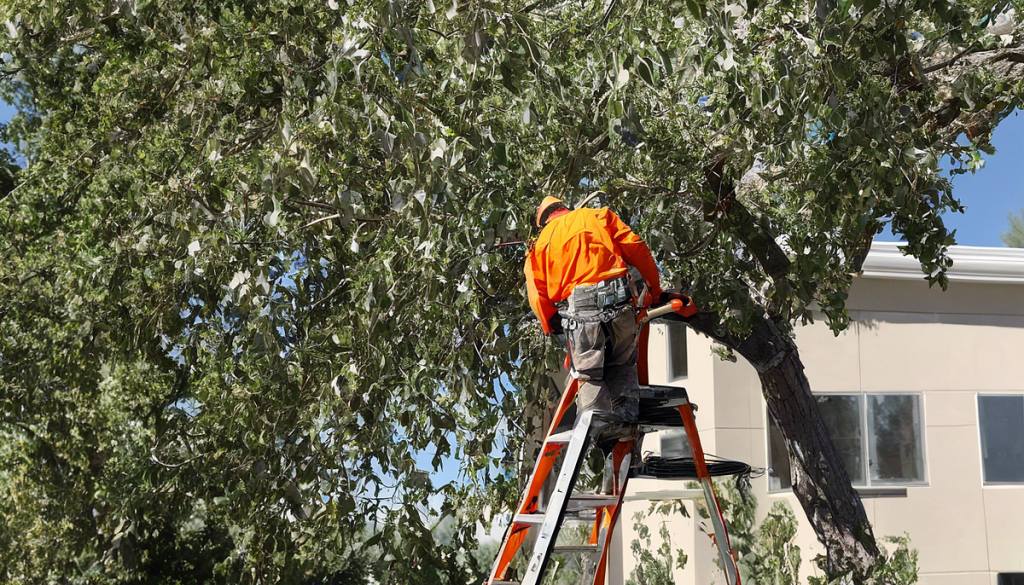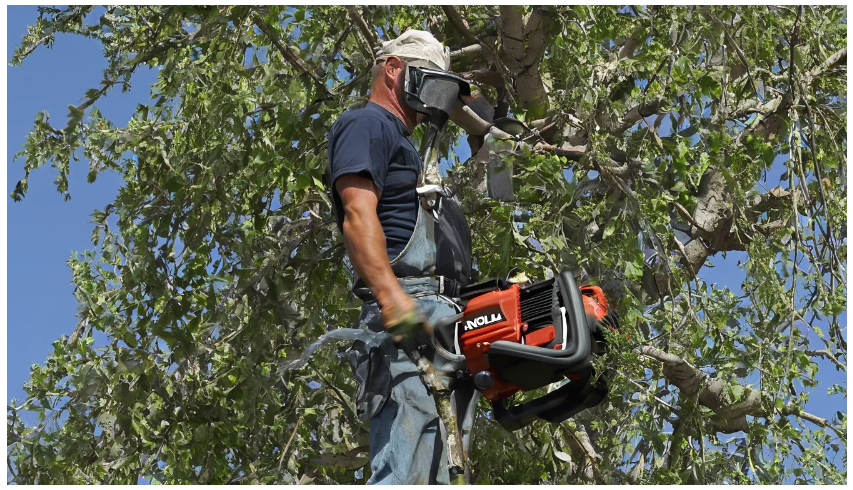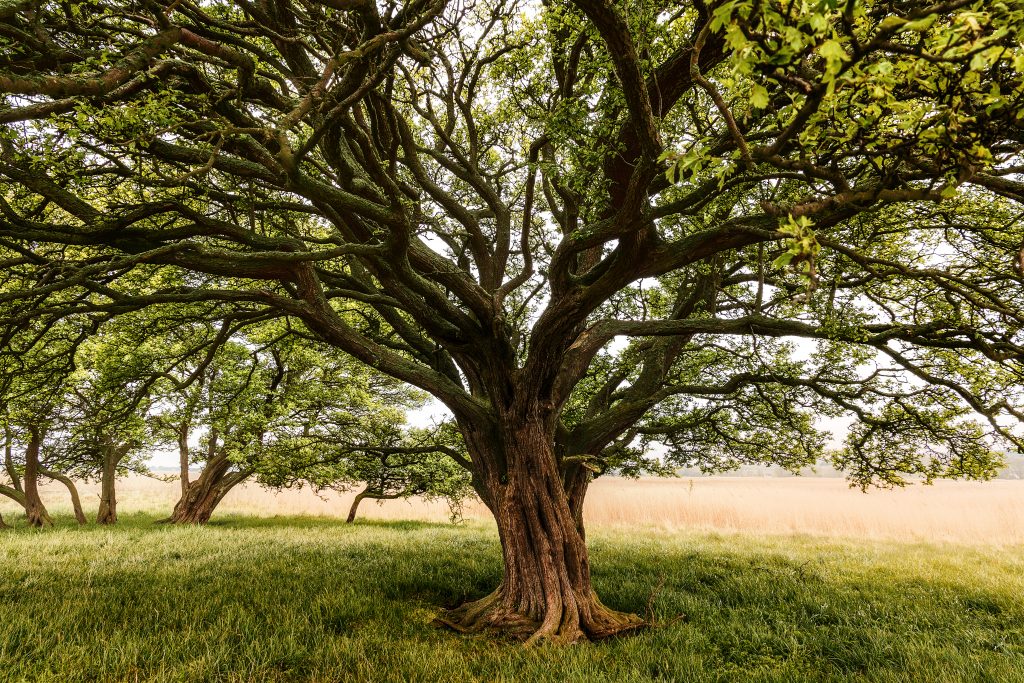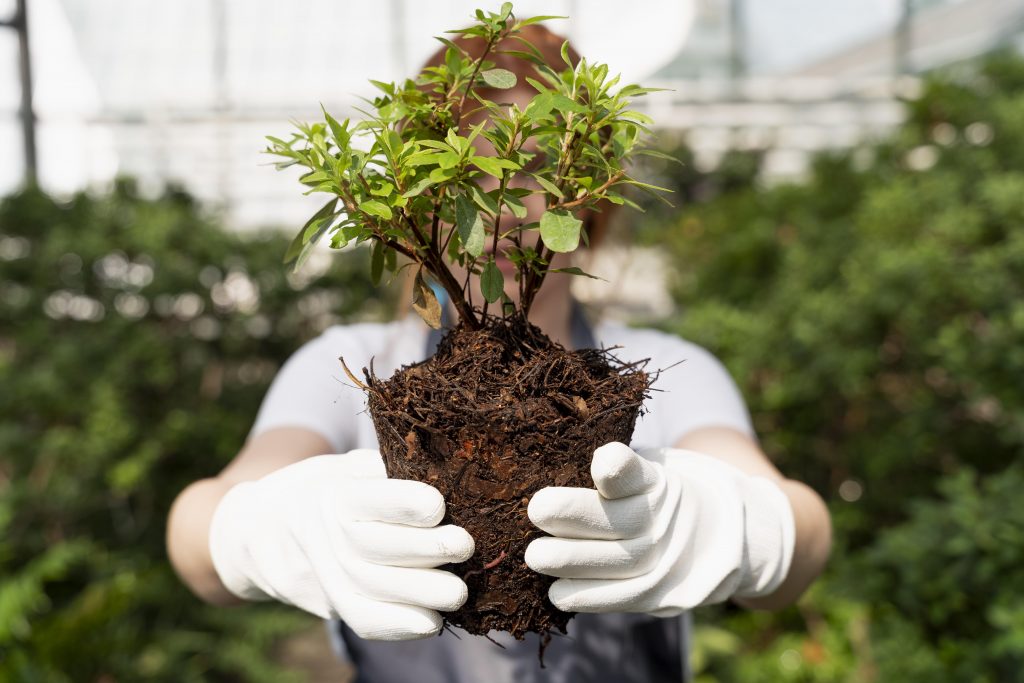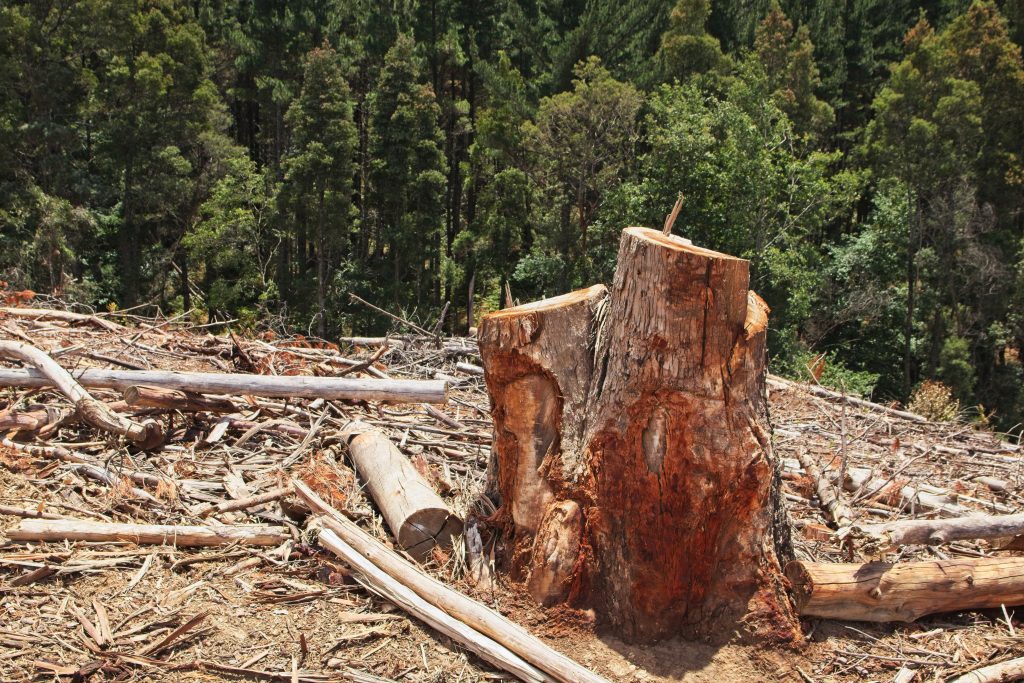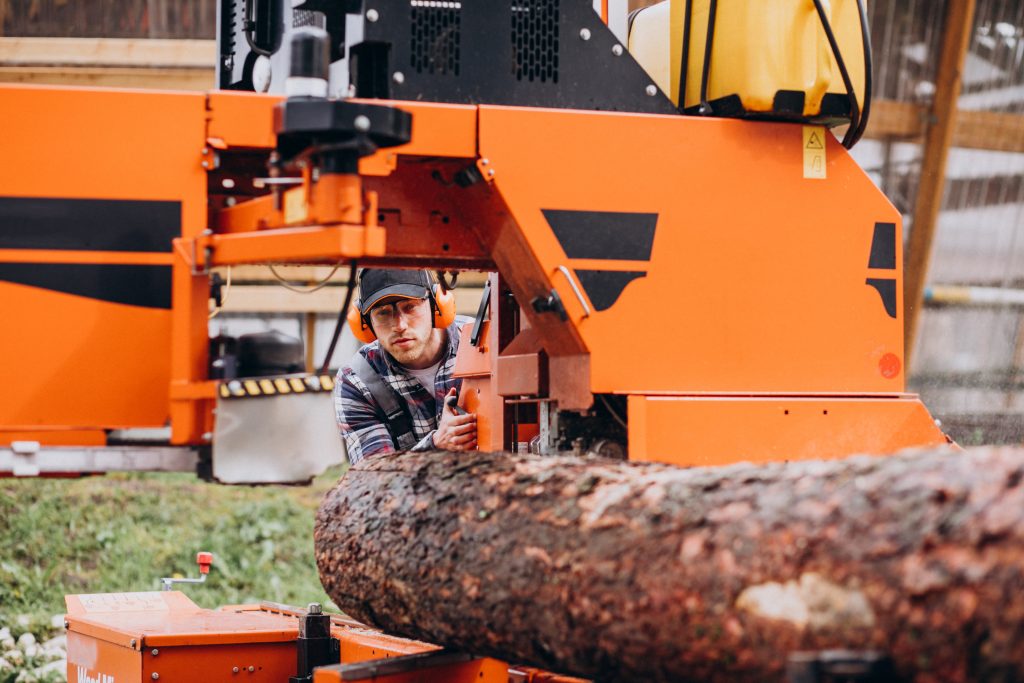How to Estimate Tree Removal Jobs
Are you struggling to accurately estimate tree removal jobs? Look no further. In this article, we will guide you through the process step-by-step, providing you with valuable tips and techniques to help you become an effective tree removal estimator. By following our dos and don’ts and avoiding common mistakes, you will gain the skills needed to provide accurate estimates every time. Get ready to take your tree removal estimation game to the next level!

Key Takeaways
- Accurate estimates are important for cost-effectiveness, time management, customer satisfaction, and risk mitigation in tree removal jobs.
- Historical techniques and advancements in technology have improved the accuracy of tree removal estimation.
- Factors such as size, location, complexity, and additional services need to be considered when estimating tree removal jobs.
- Safety precautions, including proper training, protective gear, accident prevention, and prioritizing safety, are crucial in tree removal jobs.
Introduction: Importance
You might be wondering why understanding the importance of estimating tree removal jobs is crucial. Well, let me tell you, accurate estimates play a significant role in the success of any tree removal project. Here are four reasons why:
- Cost-Effectiveness: By accurately estimating the scope of work and the resources required, you can ensure that you are charging the right amount for your services. This helps you avoid overcharging or undercharging, leading to better profitability.
- Time Management: Accurate estimates allow you to plan the project timeline effectively. By knowing the estimated duration of the job, you can schedule resources, equipment, and labor accordingly, ensuring timely completion.
- Customer Satisfaction: Providing accurate estimates builds trust with your customers. When you deliver what you promised within the estimated budget and timeline, it enhances customer satisfaction and increases the likelihood of repeat business and referrals.
- Risk Mitigation: Accurate estimates help you identify potential risks and challenges associated with the project. This allows you to plan for contingencies, allocate resources wisely, and minimize the chances of unexpected delays or cost overruns.
Understanding the importance of tree removal estimation and the benefits of accurate estimates is crucial for your business success. Now, let’s delve into the history of tree removal estimation techniques.
History of Tree Removal Estimation Techniques
The history of estimating techniques for removing trees is fascinating. Over the years, arborists and tree removal professionals have developed various methods to accurately estimate the costs involved in removing trees. These techniques have evolved with advancements in technology and a deeper understanding of tree biology and structural integrity.
In the past, estimating tree removal costs was a laborious task that relied heavily on experience and visual assessment. Arborists would physically inspect the tree, taking into account its size, condition, and location. However, this approach was subject to human error and lacked precision.
With the advent of technology, estimating tree removal costs has become more accurate and efficient. Nowadays, arborists use advanced tools such as laser rangefinders and aerial imagery to gather precise measurements and assess the tree’s health. These tools allow for a more objective evaluation of the tree’s condition and provide a clearer understanding of the potential risks and challenges involved in the removal process.
Furthermore, computer software programs have been developed to aid in estimating tree removal costs. These programs use algorithms and data inputs to calculate the time, labor, and equipment required for the job. This data-driven approach ensures greater accuracy and helps professionals provide more reliable cost estimates to their clients.
Understanding the history of tree removal estimation techniques is crucial for professionals in this field. It highlights the progress made in accurately assessing the costs involved and ensures that modern methods are built upon a solid foundation of knowledge.
Transitioning to the subsequent section about ‘tips,’ it is important to apply these historical techniques and advancements in estimating tree removal costs to consistently provide accurate estimates for your clients.
Tips
When estimating the cost of a tree removal job, there are several key factors to consider. These include the size and location of the tree, the complexity of the job, and any additional services required, such as stump removal or debris disposal. In terms of time estimation, factors such as the equipment needed, the skill level of the tree removal crew, and any potential obstacles or hazards can all affect the duration of the job. Safety precautions are of utmost importance during tree removal, as it is a hazardous task. This includes using personal protective equipment, following proper techniques and procedures, and ensuring a safe working environment for both the tree removal crew and any nearby structures or individuals.
Cost Factors
One of the main cost factors to consider when estimating tree removal jobs is the size and height of the tree. The larger and taller the tree, the more labor-intensive and time-consuming the removal process becomes. To calculate the price for tree removal, professionals often use a formula that takes into account the tree’s height, girth, and overall size. Additionally, factors such as the tree’s location, accessibility, and potential hazards also impact the cost estimation. By analyzing these variables, arborists can provide an accurate price calculation for the tree removal job. Once the cost estimation is determined, the next step is to estimate the time required for the task, which involves assessing the complexity of the job, the equipment needed, and the number of workers involved. Transitioning into the subsequent section about ‘time estimation’, it is crucial to consider various aspects in order to provide an accurate estimate for the tree removal job.
Time Estimation
Assessing the complexity of the task, arborists determine the time required for the tree removal job. Effective time management is crucial for a successful tree removal project. To estimate the time needed, arborists use various techniques that take into account factors such as the size, type, and location of the tree, as well as the equipment and manpower available. They consider the number of branches, the thickness of the trunk, and any obstacles in the vicinity. By carefully assessing these factors, arborists can develop accurate estimates for the time required to complete the job. This allows them to plan their resources effectively and ensure that the project is completed within the specified time frame. Transitioning into the subsequent section about safety precautions, it is important to note that along with time management, arborists also prioritize the safety of themselves and others during the tree removal process.
Safety Precautions
Now that you have estimated the time it will take to complete the tree removal job, it is important to consider the safety precautions that need to be taken. Safety training and the use of protective gear are essential in preventing accidents and injuries. Before starting any tree removal project, make sure that you and your team have received proper safety training. This training should cover topics such as how to use equipment safely, how to identify potential hazards, and how to respond in case of an emergency. Additionally, it is crucial to wear the appropriate protective gear, such as hard hats, safety glasses, gloves, and steel-toed boots, to minimize the risk of injury. By prioritizing safety, you can ensure a smooth and incident-free tree removal process.
Moving on to the next section about traits of effective tree removal estimators.
Traits of Effective Tree Removal Estimators
To be an effective tree removal estimator, you need to have strong communication skills and a keen eye for assessing the condition of trees. These two traits are crucial for accurately estimating the cost and effort required for removing trees. When it comes to habits for accurate tree removal estimates, there are a few insights for effective tree removal estimators to keep in mind.
Firstly, it is important to conduct a thorough visual inspection of the tree. Look for signs of decay, disease, or structural issues that may impact the removal process. Pay attention to the tree’s overall health, the presence of dead branches, and any leaning or overhanging limbs that could pose a danger during removal.
Additionally, effective tree removal estimators should communicate effectively with the client. This includes listening attentively to their concerns and clearly explaining the process and potential risks involved in the removal. Address any questions or hesitations they may have and provide them with a detailed estimate that outlines the cost, time frame, and necessary equipment for the job.
Steps for Accurate Tree Removal Estimates
One important step for accurately estimating the cost and effort of removing trees is conducting a thorough visual inspection. By carefully assessing the tree’s size, condition, and location, you can gather valuable information to determine the resources required for the job. Here are four key factors to consider during the inspection:

- Tree Size: Measure the height and diameter of the tree to gauge the amount of work needed. Larger trees may require special equipment or additional personnel, which can significantly impact the overall cost estimation.
- Tree Condition: Assess the health of the tree and identify any signs of disease, decay, or pest infestation. Unhealthy trees may pose a higher risk during removal, requiring extra precautions and resources.
- Access and Surroundings: Evaluate the accessibility of the tree and the surrounding environment. Factors such as nearby structures, power lines, or obstacles can affect the complexity and time required for removal.
- Debris Disposal: Consider the disposal of the tree debris. Will it be chipped on-site, hauled away, or left for the property owner? Proper disposal methods should be factored into the cost estimation.
Goals
Assess your objectives and priorities to effectively plan and execute the tree removal process. Setting clear goals will guide your actions and help you achieve the desired outcome. Here are some tips to consider when establishing your goals for tree removal:
- Safety: Ensure the safety of people and property during the tree removal process. This should be the top priority for any tree removal job.
- Efficiency: Aim to complete the tree removal in a timely and efficient manner. This will help minimize disruption and reduce costs.
- Environmental Impact: Consider the environmental impact of tree removal. Explore options for recycling or repurposing the tree, or planting a new one in its place.
Table: Goals for Tree Removal
| Goals | Description |
|---|---|
| Safety | Prioritize the safety of people and property during the tree removal process. |
| Efficiency | Strive to complete the tree removal job in a timely and efficient manner. |
| Environmental Impact | Consider the environmental impact and explore options for recycling or replanting. |
Habits for Effective Tree Removal Estimators
When establishing goals for tree removal, it’s important for estimators to develop effective habits. These habits are crucial in ensuring accurate estimates and successful completion of tree removal projects. To be an effective tree removal estimator, there are certain traits and steps you should possess and follow.
One important trait is attention to detail. Paying close attention to the specific requirements of each tree removal job is essential for accurate estimates. This includes assessing the size, type, and condition of the trees, as well as considering any potential obstacles or hazards that may affect the removal process.
Another important habit is conducting thorough site inspections. This involves physically visiting the site to assess the trees and the surrounding environment. By evaluating the accessibility, proximity to structures, and any unique challenges at the site, you can develop a more accurate estimate of the time, resources, and equipment required for the job.
Additionally, effective communication is key when estimating tree removal projects. This includes actively listening to the client’s needs and concerns, as well as clearly articulating the scope of work, timeline, and cost involved.
By cultivating these habits and incorporating them into your estimating process, you can enhance your accuracy and efficiency as a tree removal estimator.
Now, let’s delve into a real-life story that highlights the importance of these habits in successful tree removal estimation.
A Real-Life Story
Now that you understand the habits of effective tree removal estimators, let’s dive into a real-life story that highlights the challenges you may encounter when estimating tree removal jobs. This story will give you a glimpse into the complexities and uncertainties that can arise in this line of work.
Imagine you are called to estimate the cost of removing a large oak tree that is dangerously close to a house. As you assess the tree, you notice several factors that complicate the estimate. The tree has extensive branches that intertwine with nearby power lines, requiring the involvement of a utility company. Additionally, the tree’s location makes it difficult to access with heavy machinery, meaning the removal will likely require manual labor.
As you navigate these challenges, you realize the importance of considering these variables when estimating the cost and duration of the job. Each real-life experience serves as a valuable lesson, allowing you to refine your estimation process and account for potential obstacles that may arise.
With these challenges in mind, let’s delve into the next section, where we will discuss the importance of accurate quotes in tree removal jobs.
Quotes
As you’re navigating the challenges of estimating tree removal costs, it’s crucial to consider the importance of accurate quotes. When it comes to tree removal, accurate quoting is essential for both the arborist and the customer. An accurate quote ensures that the customer understands the costs involved and can make an informed decision. It also allows the arborist to properly plan for the job, ensuring that they have the necessary equipment, manpower, and time allocated.
However, estimating tree removal costs can be quite challenging. Each tree is unique, and factors such as size, location, species, and condition all play a role in determining the cost. Assessing these factors accurately requires knowledge and experience. Additionally, there may be unforeseen challenges, such as limited access or the presence of power lines, that can affect the cost and complexity of the job.
To overcome these challenges, arborists rely on their expertise and use various techniques to provide accurate quotes. They may assess the tree visually, take measurements, and consider any special equipment or permits required. They also take into account their own costs, such as labor, disposal, and equipment maintenance. By carefully considering all these factors, arborists can provide reliable quotes that accurately reflect the cost and complexity of the tree removal job.
Understanding the importance of accurate quoting and the challenges involved is just the first step in estimating tree removal costs. In the next section, we will explore some secrets to help you refine your estimates and ensure successful tree removal projects.
Secrets
One secret to refining cost estimates for removing trees is to carefully consider all factors that may affect the complexity and price of the project. To provide accurate estimates, it is crucial to understand the secrets revealed by experts in the field. By following their advice, you can ensure that your estimates are precise and reliable.
One of the secrets to consider is the size and species of the tree. Larger trees generally require more labor and specialized equipment for removal, which can significantly impact the cost. Additionally, certain species may have unique characteristics that affect the difficulty of the removal process.
Another aspect to consider is the location of the tree. If the tree is located in a hard-to-reach area or close to structures, it may require additional precautions and specialized techniques. These factors can increase the complexity of the project and, subsequently, the cost of removal.
Furthermore, the overall condition of the tree should be taken into account. Diseased or decaying trees may pose a higher risk during removal, requiring extra safety measures and expertise. These factors should be carefully evaluated to ensure an accurate estimate.
Insights for Accurate Tree Removal Estimates
To ensure accurate cost assessments for removing trees, it is important to consider valuable insights from experts in the field. When it comes to tree removal pricing, estimating the cost can be challenging without the right knowledge and experience. By consulting with professionals who specialize in tree removal, you can gain valuable insights that will help you accurately estimate the cost of the job.
Experts in tree removal have a deep understanding of the factors that affect pricing. They consider various aspects such as the size and type of tree, its location, accessibility, and any potential hazards involved. These factors play a crucial role in determining the complexity and duration of the removal process, which in turn affects the overall cost.
Furthermore, experts can also provide guidance on the necessary equipment and manpower required for the job. They can accurately assess the level of difficulty involved and provide you with a comprehensive estimate that takes into account all the relevant factors.
By relying on the expertise of professionals, you can avoid the pitfalls of underestimating or overestimating the cost of tree removal. Accurate estimates not only help you plan your budget effectively but also ensure that you receive fair pricing for the services rendered.
With a clear understanding of the importance of accurate tree removal estimates, let’s now explore the benefits they offer in the subsequent section.
Benefits of Accurate Tree Removal Estimates
Now that you have gained insights into accurate tree removal estimates, let’s explore the benefits of employing accurate estimation techniques. By using precise calculations, you can maximize profitability for your tree removal business.
Accurate estimation techniques allow you to provide your clients with a transparent and reliable cost estimate for their tree removal needs. This not only builds trust with your customers but also helps you avoid any potential disputes or misunderstandings regarding pricing. Moreover, accurate estimates enable you to plan your resources efficiently, ensuring that you have the necessary equipment, manpower, and time allocated for each job.
By accurately estimating tree removal jobs, you can also minimize the risk of underpricing or overpricing your services. Underpricing can lead to financial losses, while overpricing may deter potential clients and result in missed opportunities. With accurate estimation techniques, you can strike a balance between competitive pricing and profitability, attracting more customers and maximizing your revenue.
As you continue to refine your estimation skills, you will learn valuable lessons in optimizing your profitability and streamlining your operations. These lessons will be instrumental in guiding you towards becoming a successful and sought-after tree removal service provider.
Lessons
When it comes to tree removal, understanding the cost factors is crucial. In this discussion, you will learn about the various factors that influence the cost of removing a tree, such as the size, location, and complexity of the job. Additionally, safety precautions will be emphasized to ensure that you have a clear understanding of the necessary measures to take during the tree removal process. Finally, we will delve into the equipment and techniques used in tree removal, providing you with valuable insights into the tools and methods employed by professionals in the field.
Cost Factors Explained
Understanding the various cost factors can help homeowners accurately estimate tree removal jobs. When it comes to tree removal pricing, several factors come into play. The size and height of the tree, as well as the complexity of the job, can impact the overall cost. Additionally, the location of the tree, accessibility to the site, and any necessary permits or licenses can also affect the price. Estimating project timelines is another important aspect. Factors such as the number of trees, the equipment required, and the expertise of the tree removal company can influence how long the project will take. By considering these cost factors and estimating project timelines, homeowners can better plan and budget for their tree removal needs. Now, let’s discuss the safety precautions emphasized during tree removal.
Safety Precautions Emphasized
Safety precautions are emphasized during tree removal to protect both workers and surrounding property. It is essential to have the proper equipment and training to ensure a safe and efficient removal process. Tree removal equipment includes chainsaws, ropes, harnesses, and wood chippers. Chainsaws are used to cut down the tree, while ropes and harnesses are used to control its direction and prevent it from causing damage. Wood chippers are used to dispose of the tree limbs and branches. Proper training is crucial to operate this equipment effectively and safely. Tree removal training teaches workers how to assess the condition of a tree, identify potential hazards, and use the equipment correctly. By following safety precautions and having the necessary equipment and training, tree removal can be done efficiently and without causing harm to anyone or anything. In the next section, we will discuss the various equipment and techniques used in tree removal.
Equipment and Techniques
To efficiently remove trees, you’ll need to familiarize yourself with the equipment and techniques used in the process. Proper equipment maintenance is crucial to ensure safe and effective tree removal. Regularly inspect and clean your chainsaws, ensuring the blades are sharp and the chain tension is correct. Additionally, maintain your ropes, harnesses, and climbing gear, checking for any signs of wear or damage. When it comes to tree removal techniques, it’s essential to assess the tree’s structure and determine the best approach. Common techniques include felling, where the tree is cut down in one piece, and sectional dismantling, where the tree is removed in smaller sections. By understanding and implementing these equipment maintenance practices and tree removal techniques, you can ensure a successful and efficient tree removal process. Now, let’s delve into the routines…
Routines
When estimating tree removal jobs, it’s important to establish routines for efficiency and accuracy. By implementing consistent routines, you can streamline the estimation process and ensure that all necessary factors are accounted for. One routine you can establish is to always conduct a thorough site inspection before providing an estimate. This involves assessing the size, condition, and location of the tree, as well as any potential obstacles or hazards that may affect the removal process. Additionally, developing a systematic approach to estimating can greatly improve accuracy. This could involve breaking down the job into smaller tasks, such as calculating the time and resources required to cut and remove the tree, as well as any additional services like stump grinding or debris cleanup. Another important routine is keeping detailed records of previous jobs. This allows you to refer back to similar projects and use them as a benchmark for estimating future jobs. By incorporating these routines into your estimating techniques, you can enhance efficiency and accuracy in your tree removal estimates.
Transitioning into the subsequent section about the pros and cons of different tree removal methods, it’s crucial to consider various factors that can influence your decision-making process.
Pros and Cons
Considering the pros and cons of different methods can help you make an informed decision about how to approach tree removal. When it comes to tree removal, there are several options available, each with its own benefits and lessons to be learned. One method is to hire a professional tree removal service. This ensures that the job is done safely and efficiently, as professionals have the necessary skills and equipment. However, the cost can be quite high, and you may have to wait for an available slot in their schedule. Another option is to rent specialized equipment and remove the tree yourself. This can save you money, but it requires knowledge and experience to operate the machinery safely. Additionally, you would be responsible for the cleanup and disposal of the tree debris. Lastly, you could consider hiring a local tree removal contractor. This option provides a balance between cost and expertise. However, it’s important to do your research and choose a reputable contractor to avoid potential issues. Understanding the pros and cons of each method will help you make the best decision for your specific situation. Moving forward, it’s important to keep in mind the dos and don’ts of tree removal to ensure a successful and safe job.
Dos and Dont’s
Remember, it’s important to follow the dos and don’ts when it comes to removing trees to ensure a safe and successful job. Here are some key guidelines to keep in mind:

| Dos | Don’ts |
|---|---|
| Properly assess the tree’s condition and location. | Underestimate the size or weight of the tree. |
| Use the right tools and equipment for the job. | Attempt to remove the tree without proper training or experience. |
| Plan and execute the removal process carefully. | Neglect to check for underground utilities or nearby structures. |
Following these dos and don’ts will help reduce the risk of accidents and ensure a smooth tree removal process. It is crucial to assess the tree’s condition and location before starting the removal. This will help you determine the best approach and identify any potential hazards. Additionally, using the right tools and equipment is essential for efficiency and safety. Planning is key, so make sure to develop a detailed strategy and execute it with caution. Lastly, always prioritize safety by checking for underground utilities and nearby structures.
Mistakes to Avoid
To ensure a successful tree removal, it’s important that you avoid these common mistakes. One of the most common errors is underestimating the size and complexity of the job. It’s crucial to accurately assess the tree’s height, diameter, and overall condition before providing a quote. Another mistake to avoid is not considering the location of the tree. Factors like nearby buildings, power lines, and other obstacles can significantly impact the cost and difficulty of the removal. Additionally, failing to properly communicate with the client can lead to misunderstandings and dissatisfaction. Make sure to clearly explain the pricing strategies, including any additional charges for stump removal, debris disposal, or emergency services. Providing a detailed breakdown of the costs will help avoid any surprises or disputes later on. By avoiding these common errors, you can ensure a smooth and successful tree removal process.
Now that you know the mistakes to avoid, let’s move on to the key takeaways for estimating tree removal jobs.
Key Takeaways
Now that you are aware of the mistakes to avoid when estimating tree removal jobs, it’s important to understand the key takeaways for accurate cost estimation and effective time management.
When it comes to cost estimation, it is crucial to consider various factors such as the size and type of the tree, its location, and any potential obstacles or hazards. By carefully assessing these factors, you can provide clients with a more accurate estimate, avoiding any surprises or discrepancies in the final cost.
Time management is another essential aspect to consider. Proper planning and scheduling can help ensure that tree removal jobs are completed within the specified timeframe. This includes allocating sufficient time for tree assessment, obtaining necessary permits, mobilizing equipment, and executing the actual removal process. By effectively managing your time, you can not only meet client expectations but also optimize your resources and increase overall productivity.
Now that you understand the key takeaways for accurate cost estimation and effective time management, let’s delve into specific action steps for ensuring precise tree removal estimates.
Specific Action Steps for Accurate Tree Removal Estimates
When estimating tree removal jobs, it is crucial to accurately assess the size of the tree. This involves measuring the height, diameter, and crown spread to determine the level of difficulty and the equipment needed. Additionally, evaluating potential hazards such as nearby structures, power lines, or decayed branches is essential for ensuring safety during the removal process. Finally, factoring in equipment costs, including the use of cranes, chippers, and chainsaws, helps determine the overall cost of the tree removal job.
Assessing Tree Size
You can easily determine the size of a tree by measuring its trunk circumference and height. Assessing the size of a tree is crucial when it comes to assessing tree health and estimating tree removal costs. To assess the size of a tree, start by measuring the circumference of the tree trunk at chest height using a measuring tape. This will give you an idea of the tree’s girth, which is an important factor in estimating removal costs. Next, measure the height of the tree using a measuring tape or a height-measuring device. These measurements will provide you with the necessary information to accurately evaluate the size of the tree and determine the resources needed for removal. Once you have assessed the size of the tree, you can move on to evaluating potential hazards, such as weak branches or proximity to structures.
Evaluating Potential Hazards
Assessing tree size is important, but it’s also crucial to evaluate potential hazards such as weak branches or proximity to structures. Hazard assessment is a key step in determining the risk associated with tree removal jobs. When evaluating potential hazards, it is important to look for signs of decay, disease, or structural weakness in the tree. Weak branches, cracks in the trunk, or leaning trees can pose significant risks during the removal process. Additionally, the proximity of the tree to structures or power lines must be carefully considered to prevent damage or accidents. By conducting a thorough risk evaluation, you can identify potential hazards and develop appropriate strategies to mitigate them. Now, let’s transition into the next section and discuss the importance of factoring in equipment costs.
Factoring in Equipment Costs
To accurately factor in equipment costs, it’s crucial to consider the specific tools and machinery needed for the tree removal job. Equipment selection plays a vital role in determining the overall cost of the project. You need to carefully evaluate the requirements of each job and choose the appropriate equipment accordingly. For instance, if you’re dealing with large trees, you may need heavy-duty chainsaws, cranes, or even chippers to handle the debris. On the other hand, smaller trees may only require basic tools like hand pruners or small chainsaws. By conducting a thorough cost analysis, you can determine the most cost-effective equipment for each job. This analysis will help you optimize your resources and ensure that you’re not overspending on equipment that is unnecessary for the task at hand.
Frequently Asked Questions
How Long Does It Typically Take to Remove a Tree?
Estimating tree removal time depends on several factors. These include the size of the tree, its location, and any obstacles in the way. On average, it typically takes a few hours to remove a tree, but this can vary.
What Are the Potential Hazards of Tree Removal?
Potential hazards of tree removal include falling branches, unstable trees, and power lines. Safety precautions, such as wearing protective gear, inspecting the area, and hiring professional arborists, are crucial to prevent accidents.
Can Tree Removal Be Done During Any Time of the Year?
The best time to do tree removal depends on the weather conditions. It’s important to consider factors like soil moisture and the presence of ice or snow, as they can affect the safety and efficiency of the job.
Are There Any Alternatives to Tree Removal?
Tree preservation and tree relocation are viable alternatives to tree removal. By preserving the tree’s health and relocating it to a more suitable location, you can avoid the need for removal altogether.
How Much Does Tree Removal Cost on Average?
On average, tree removal costs vary depending on factors like tree size, location, and complexity. Tree removal equipment and labor costs are also significant. Get accurate estimates by considering all these factors.
If you need a tree service in Utah, you can call:
Truco Services, Inc.
4640 Commerce Drive
Murray, Utah 84107
(801) 466–8044
https://truetreeservices.com/

